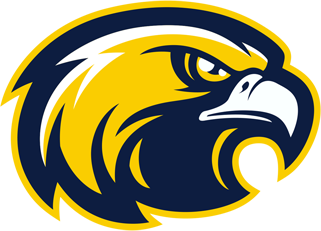Special Delivery Options
Consultation:
Assistance to the regular education classroom teacher by a certified intervention specialist: develops instructional or behavioral strategies for students with disabilities, selects or develops instructional materials, and assists in the development of appropriate classroom and instructional modifications of the general education curriculum.
Direct:
Provision of instruction and evaluation of instruction based on the general and/or functional curriculum by a certified intervention specialist in ares identified in the student's IEP.
Support:
Provision of instruction in collaboration with the regular education classroom teacher that supports the student in the instruction of the general curriculum by a certified intervention specialist in areas identified on the student's IEP.
Related Services:
Supportive, corrective and developmental services included on the IEP and required for students with disabilities to benefit from special education. Examples include, but are not limited to, transportation, speech and language, occupational and physical therapy, adapted physical education, school psychology services, interpreter services, mental heath/behavior specialist support, work-study services, and aide support.
Adapted Physical Education:
The purpose of the adapted physical education (APE) program is to provide support to general physical education teachers and specialized instruction to students with disabilities in the physical education setting. APE teachers provide services on an itinerant basis or in school based classes. Selected students with disabilities, as recommended by the Individualized Education Program (IEP) team, may participate in a general physical education class through adaptations and modifications to the general education curriculum developed collaboratively by the adapted physical education and general physical education teachers.
Teachers in the APE program provide support and instruction to students with disabilities in the physical education setting both through consultation and direct instruction. Students participate in general education physical education classes with non-disabled peers or in smaller classes with other students with disabilities.
APE teachers share information about disabilities with physical education teachers and assist general education teachers in developing unit plans that include all students.
Additionally they provide disability awareness to students in physical education classes and provide adapted equipment when needed by specific students.
Skill instruction is provided for both individuals and small groups of students.
APE teachers will demonstrate to students in the class ways to include their peers with disabilities and will translate complex instructions into simpler language for students with disabilities.
Occupational Therapy:
School based occupational therapy is a related service provided to optimize the occupational performance of the student with special needs, identified for special education. The occupational therapist is concerned with ensuring an understanding of, and match between the student’s skills and abilities and the expectations placed on him/her in the school setting.
Occupational therapists support academic skills such as math, reading and writing and non-academic skills such as recess, self-help skills, social skills and prevocational/vocational participation and more, for students with disabilities, 3-21 years of age.
As a team member, the Occupational Therapist plays a critical role in collaborating with and training teachers, paraprofessionals and parents to help plan relevant instructional activities and adaptations for ongoing implementation in the classroom and other school environments. School-based occupational therapy takes place where the child receives education. Appropriate intervention may be provided in classrooms, lunchrooms, playgrounds, restrooms, or in a separate therapy area.
Occupational therapists are skilled in:
Observing a student engaging in an activity and providing strategies to facilitate the student's full participation
Reducing barriers that limit student participation within the school environment
Selection and use of assistive technology to support student success
Interventions for motor skills, sensory processing, eye-hand coordination, visual perception and other developmental areas that impact a student’s learning.
Physical Therapy:
Physical therapy is a related service provided to assist a child with a disability to benefit from special education. School physical therapy focuses on a child's ability to move as independently as possible in the school environment. The school physical therapist evaluates the child's ability to move throughout the school and to participate in classroom activities.
The decision of whether a child with a disability qualifies for school physical therapy is made by a team. This team determines whether the child has a disability, has a need for special education, and requires related services such as physical therapy. physical therapy interventions are designed to enable the student to travel throughout the school environment; participate in classroom activities; maintain and change positions in the classroom; as well as manage stairs, restrooms, and the cafeteria.
School-based physical therapy addresses purposeful, goal-directed activities to improve student function within the educational environment, in the following areas:
Motor Planning
Sensorimotor coordination
Posture
Balance
Functional Mobility
Activities of daily living
Accessibility
Environmental adaptations
Use of assistive devices
Speech and Language Pathologist :
The speech and language pathologist (SLP) identifies students eligible for speech-language programming necessary to facilitate their success with the school curriculum. The SLP addresses student communication needs by ensuring that IEPs contain current assessment information documenting present levels of performance and the manner in which the speech-language impairment affects progress in the general curriculum (or appropriate preschool activities).
The speech language pathologist is trained in the area of communication development and disabilities, including those of both organic and nonorganic origin, that impede the normal process of human communication, including disorders of articulation, fluency, voice, oral motor deviations, and receptive and expressive language. The speech-language pathologist understands how communication skills are linked to broader educational goals, including curricular outcomes, and communicates this understanding with school staff and parents.
The SLP uses a variety of assessment techniques to evaluate student progress in communication skills and modifies interventions based on on-going data collection. The SLP uses a broad range of therapeutic techniques and strategies and integrates technology and research into planning and implementing services. Service delivery may include some or all of the following: direct instruction, instruction in the student’s classroom, and collaboration and consultation with classroom teachers. The speech language pathologist may assist students and their family members in the selection and purchase of augmentative communication devices and assist teachers in integrating the use of a specific device into daily classroom activities.
